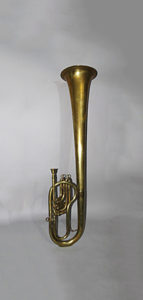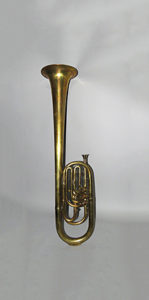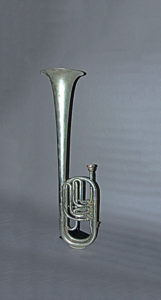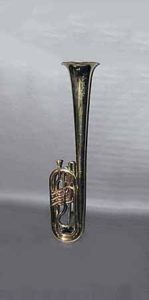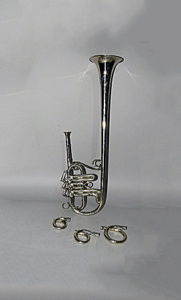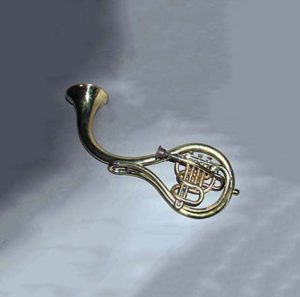OTS Saxhorns
The saxhorn consists of a family of valve brass instruments developed by Adolphe Sax in Paris, France, from around 1843 onward. A characteristic of these brass instruments was the tapering bore. While the inner tubing or bore is cylindrical, the last section had a fairly large bore, which expands rapidly. They were played with a deep cup mouthpiece, which helped in playing the partials. These instruments produce a soft mellow sound that blended well together, and they had a sufficient carrying power to be heard out of doors. Their pitch/intonation was relatively accurate but not perfect.
The OTS (‘over-the-shoulder) saxhorns were used in the brass bands during the Civil War. Since bands marched in front of the troops, these OTS Saxhorns were most common, because it was thought having the bells point backward would make it easier for the soldiers to hear the music. The OTS Saxhorns were made in a variety of sizes as shown in this collection.
Modern saxhorns still manufactured and in use include flugelhorn (Bb soprano saxhorn); alto/tenor horn (Eb alto/tenor saxhorn); baritone horn (Bb baritone saxhorn); euphonium (Bb bass, Eb bass, and Bb contrabass saxhorns); Eb bass tuba, and BBb contra bass tuba.

